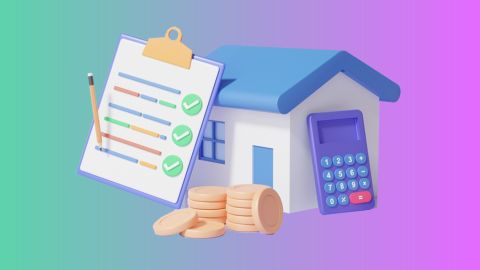Also, if you are looking to unlock the value of your property, Bajaj Finserv Loan Against Property offers a seamless solution. With competitive interest rates and flexible repayment options, it is the perfect way to meet your financial needs without selling your property.
What is a Declaration Deed?
A declaration deed is a legal document used in property transactions to declare specific details about a property. It could include the owner's rights, property boundaries, or conditions attached to the use of the property. Unlike a sale deed, which transfers ownership from one party to another, a declaration deed is often used to confirm or clarify the details of ownership, ensuring transparency in property dealings.
If you are conducting a deed search, it is crucial to verify the details contained in the declaration deed to avoid any future disputes.
Importance of Declaration Deeds in Property Transactions
Declaration deeds play a crucial role in property transactions. They help in clarifying any conditions or restrictions attached to a property, providing a clear record of rights and responsibilities. This is especially important for buyers, lenders, or legal heirs who might need to resolve disputes related to ownership or usage rights.
When applying for a loan against property, lenders may require a declaration deed to verify the ownership and condition of the property. Proper documentation not only speeds up the process but also avoids potential legal hurdles.
Types of Declaration Deeds
There are several types of declaration deeds, depending on the purpose they serve. Here are a few common ones:
- Ownership Declaration Deed: Confirms the rightful owner of the property.
- Boundary Declaration Deed: Specifies the boundaries of the property.
- Use Restriction Declaration Deed: Defines any restrictions on the use of the property.
- Mortgage Declaration Deed: Declares that the property is mortgaged to a financial institution.
Drafting a declaration deed involves following a structured approach to ensure that all legal requirements are met:
- Understand the Property Details: Gather all relevant property details like location, dimensions, and current ownership.
- Define Purpose: Clearly state the purpose of the deed – whether it is to confirm ownership, define boundaries, or specify use restrictions.
- Engage a Lawyer: It is advisable to engage a legal expert to draft the declaration deed to avoid any future complications.
- Review the Document: Before signing, ensure all the details are accurate and reflect the purpose of the declaration.
Here is a breakdown of the essential components of a declaration deed:
| Element | Description |
| Property Details | Exact location, dimensions, and boundaries of the property. |
| Ownership Information | Full details of the current owner and proof of ownership. |
| Declaration Purpose | The specific reason for creating the deed (for example: confirming ownership). |
| Rights and Obligations | Any rights or restrictions associated with the property. |
| Signatures and Witnesses | Deed must be signed by the owner and witnessed. |
Common Mistakes to Avoid When Creating a Declaration Deed
- Inaccurate Property Details: Ensure that the property details are accurate and match the records.
- Missing Legal Assistance: Drafting a deed without legal advice can lead to errors.
- Omitting Key Information: Be thorough in including all relevant details to avoid future disputes.
- Not Reviewing Properly: Always review the deed before submission to ensure accuracy.
To register a declaration deed in India, follow these steps:
- Prepare the Deed: Ensure that the declaration deed is drafted accurately, and all necessary details are included.
- Pay Stamp Duty: The deed must be printed on stamp paper of appropriate value, which varies by state.
- Visit the Sub-Registrar’s Office: The deed must be signed by both the declarant and witnesses at the Sub-Registrar’s Office.
- Submit the Required Documents: Along with the declaration deed, submit identification documents and property-related paperwork.
- Receive the Registered Document: After submission and verification, the registrar will provide a registered copy of the deed.




